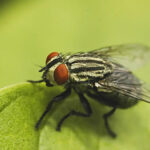How Fast Does A Cessna Fly? Cessna aircraft, renowned for their reliability and ease of operation, exhibit varying speeds influenced by factors such as model design and engine type; explore the detailed guide from flyermedia.net. Finding reliable aviation information, from aircraft performance to pilot training, is crucial for both enthusiasts and professionals; that’s why flyermedia.net offers a comprehensive resource for aviation news, flight school information, and career opportunities, covering airspeed, ground speed, and true airspeed.
1. Understanding Cessna Aircraft Speeds
Cessna aircraft speeds vary widely, typically ranging from 124 MPH to over 717 MPH, depending on the specific model and its design characteristics. The speed of a Cessna is determined by several factors, including the engine power, aerodynamic design, and weight of the aircraft. Let’s explore some specific Cessna models and their typical speeds:
- Cessna 150: As one of the slower models, the Cessna 150 has a maximum speed of approximately 125 MPH, making it suitable for basic flight training and short-distance flights.
- Cessna 172 Skyhawk: This popular model can reach speeds of up to 188 MPH; however, its typical cruising speed is around 140 MPH, ideal for training and general aviation purposes.
- Cessna 182 Skylane: Slightly faster than the 172, the Cessna 182 has a maximum speed ranging from 167 to 170 MPH, offering increased performance and payload capacity.
- Cessna 208 Caravan: Known for its utility and versatility, the Cessna 208 Caravan can achieve speeds of up to 214 MPH, making it suitable for cargo and passenger transport.
- Cessna 310: An older model with enduring popularity, the Cessna 310 can travel at speeds of up to 220 MPH, showcasing its capabilities for longer-distance flights.
- Cessna Citation X: The fastest Cessna aircraft, the Citation X, can reach a maximum speed of 717 MPH (Mach 0.935), making it one of the fastest business jets in the world.
Whether you’re looking for basic information on Cessna speeds or need to find a suitable flight school, flyermedia.net provides the resources and information you need to succeed in aviation.
2. Cessna Citation X: The Pinnacle of Speed
The Citation X is the fastest Cessna aircraft ever produced, reaching speeds up to Mach 0.935, or 717 MPH. This remarkable speed places it among the fastest civilian aircraft in the world, making it a popular choice for business executives and others who value speed and efficiency.
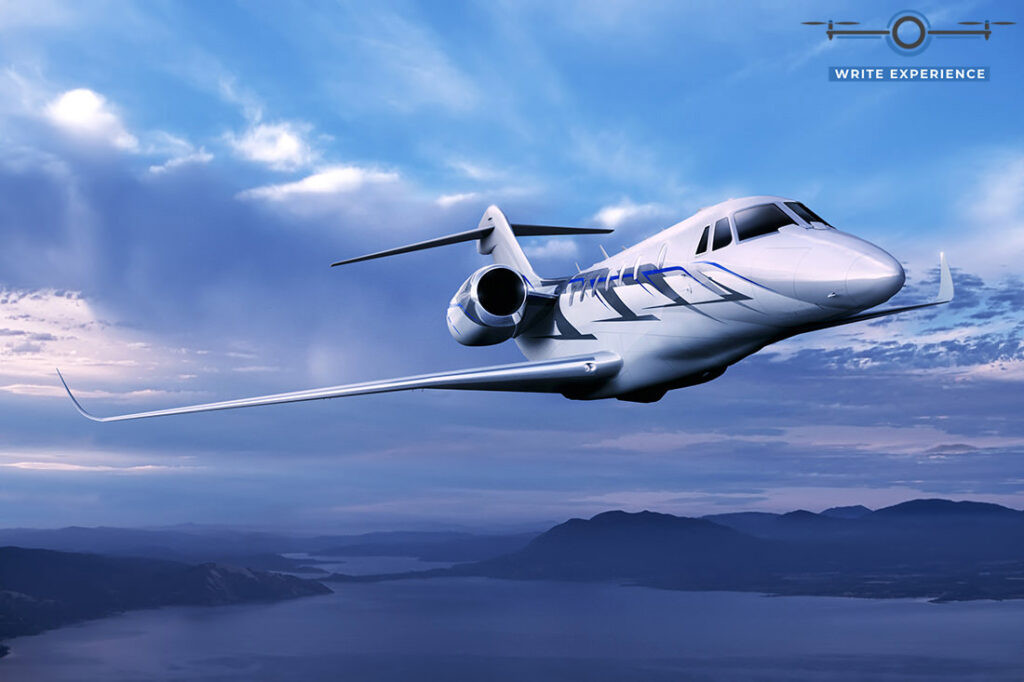 Cessna Citation X
Cessna Citation X
The Citation X’s impressive speed is made possible by its powerful engines and aerodynamic design. Its high-speed capabilities reduce travel time and increase productivity for its passengers. It can accommodate up to 12 passengers and two crew members, making it a luxurious and efficient option for long-distance travel.
For more detailed specifications and performance data on the Citation X, visit flyermedia.net.
3. Cessna 172 Skyhawk: The Training Standard
The Cessna 172 Skyhawk is one of the most popular and widely used training aircraft in the world, known for its reliability, ease of handling, and forgiving flight characteristics. The Cessna 172 can travel up to 188 MPH or 302 KPH when required. However, its cruising speed in real-life practice is typically around 140 MPH or 225 KPH.
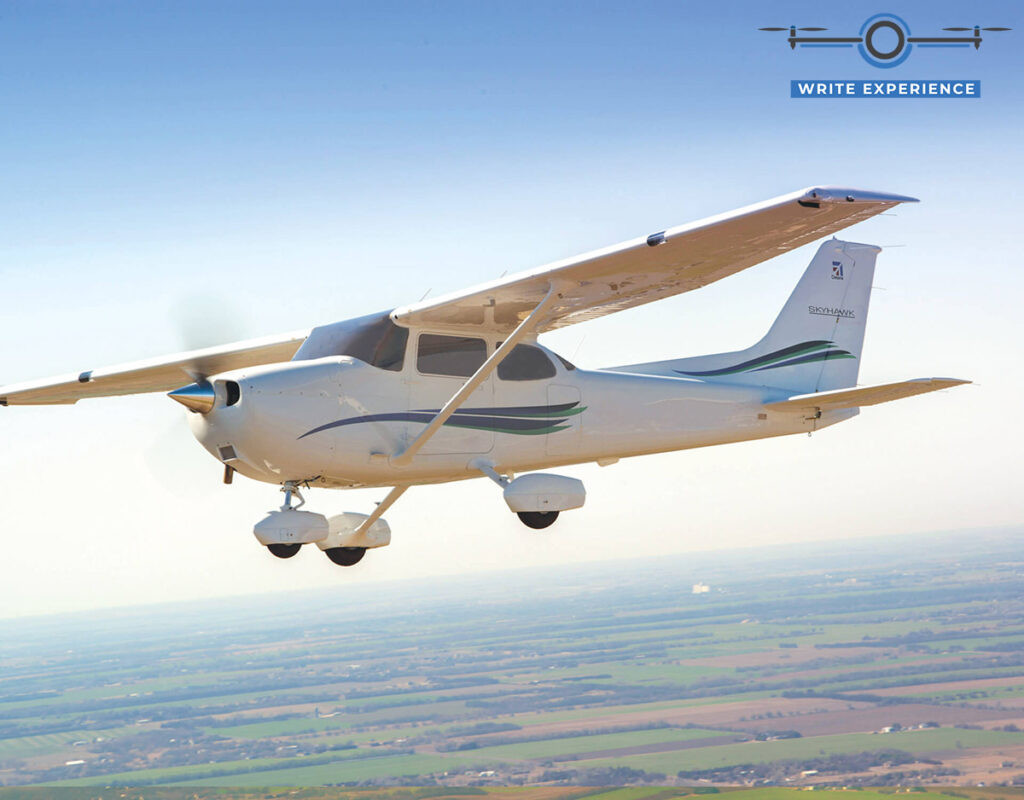 Cessna 172
Cessna 172
The Cessna 172 Skyhawk is a single-engine, high-wing aircraft that is ideal for flight training due to its stable flight characteristics and simple systems. Its relatively slow landing speed and predictable behavior make it a safe and forgiving aircraft for new pilots.
Key features of the Cessna 172 include:
- Ease of handling: The Cessna 172 is easy to control and responds predictably to pilot inputs, making it an excellent aircraft for novice pilots.
- Forgiving flight characteristics: The aircraft is designed to be stable and forgiving, reducing the risk of stalls and spins.
- Reliability: The Cessna 172 is known for its reliability and low maintenance costs, making it an affordable option for flight schools and private owners.
- Availability: With over 44,000 units built, the Cessna 172 is widely available, making it easy to find for purchase or rental.
If you are considering learning to fly, the Cessna 172 is an excellent choice. Visit flyermedia.net to find flight schools offering training in the Cessna 172.
4. Cessna 310: A Classic Twin-Engine Aircraft
The Cessna 310 is a twin-engine aircraft that has been in production since 1953, known for its speed, range, and payload capacity. The original Cessna 310 can travel at 220 MPH, underscoring its long-lasting popularity.
 Cessna 310
Cessna 310
The Cessna 310 is a popular choice for business and personal travel, offering a comfortable and efficient way to travel long distances. It can accommodate four to six passengers, making it suitable for small groups or families.
Key features of the Cessna 310 include:
- Twin-engine performance: The Cessna 310’s twin engines provide increased power and redundancy, improving safety and performance.
- Speed and range: The aircraft’s high cruising speed and long range make it ideal for cross-country travel.
- Payload capacity: The Cessna 310 can carry a significant payload, allowing for the transport of passengers and cargo.
- Comfort: The aircraft’s spacious cabin and comfortable seating provide a pleasant travel experience.
For more information on the Cessna 310, including performance specifications and operating costs, visit flyermedia.net.
5. Cessna 208 Caravan: The Utility Player
The Cessna 208 Caravan is a versatile and rugged aircraft that is used for a variety of missions, including cargo transport, passenger service, and humanitarian aid. The 208 Caravan gained popularity due to numerous practical features, accompanied by its acclaimed top speed that easily reaches 214 MPH (186 knots).
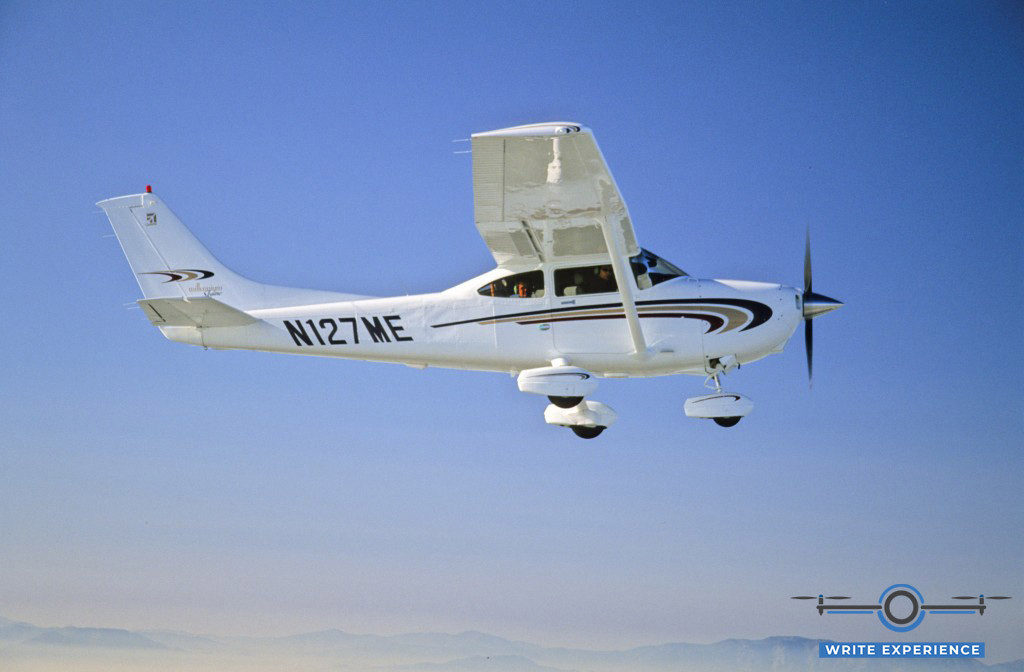 Cessna 182 Skylane
Cessna 182 Skylane
The Cessna 208 Caravan is a single-engine turboprop aircraft known for its ability to operate from short and unimproved runways, making it ideal for remote locations and challenging environments. It can seat up to nine passengers, or carry a significant amount of cargo.
Key features of the Cessna 208 Caravan include:
- Short takeoff and landing (STOL) performance: The Caravan can operate from short runways, making it ideal for remote locations.
- High payload capacity: The aircraft can carry a significant amount of cargo or passengers.
- Versatility: The Caravan can be configured for a variety of missions, including cargo transport, passenger service, and humanitarian aid.
- Reliability: The aircraft is known for its ruggedness and reliability, making it suitable for demanding operations.
If you are looking for a versatile and reliable aircraft for your business or organization, the Cessna 208 Caravan is worth considering. Visit flyermedia.net for more information.
6. Cessna 182 Skylane: A Timeless Classic
The Cessna 182 Skylane is a high-performance, single-engine aircraft that has been in production since the 1950s, known for its speed, range, and payload capacity. Its maximum speeds typically span from 167 to 170 MPH (145 knots to 148 knots).
 Cessna 182 Skylane
Cessna 182 Skylane
The Cessna 182 Skylane is a popular choice for personal and business travel, offering a comfortable and efficient way to travel long distances. It can accommodate up to four passengers, making it suitable for small groups or families.
Key features of the Cessna 182 Skylane include:
- High performance: The Skylane offers a high cruising speed and long range, making it ideal for cross-country travel.
- Payload capacity: The aircraft can carry a significant payload, allowing for the transport of passengers and baggage.
- Comfort: The Skylane’s spacious cabin and comfortable seating provide a pleasant travel experience.
- Versatility: The aircraft can be used for a variety of missions, including personal travel, business travel, and flight training.
For more information on the Cessna 182 Skylane, including performance specifications and operating costs, visit flyermedia.net.
7. Cessna 162 Skycatcher: A Light Sport Aircraft
The Cessna 162 Skycatcher is a light sport aircraft (LSA) that was produced by Cessna from 2009 to 2013, designed for flight training and recreational flying. The lighter weight and compact structure also help this plane maintain its required lifts, which explains why its average top speed reaches 136 MPH (118 knots) without difficulty.
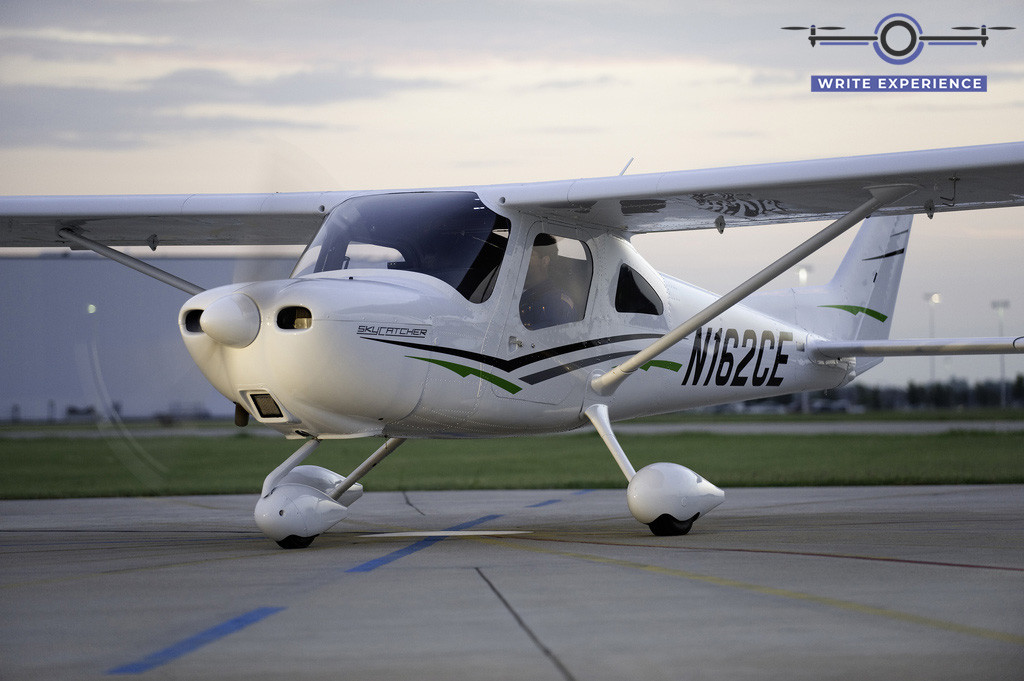 162 Skycatcher
162 Skycatcher
The Cessna 162 Skycatcher is a two-seat, single-engine aircraft that is designed to be affordable and easy to fly. Its light weight and simple systems make it an ideal aircraft for new pilots.
Key features of the Cessna 162 Skycatcher include:
- Affordability: The Skycatcher is designed to be an affordable option for flight training and recreational flying.
- Ease of handling: The aircraft is easy to control and responds predictably to pilot inputs, making it an excellent aircraft for novice pilots.
- Fuel efficiency: The Skycatcher is fuel-efficient, reducing operating costs.
- Modern avionics: The aircraft is equipped with modern avionics, including a glass cockpit display.
If you are interested in learning to fly and are looking for an affordable and easy-to-fly aircraft, the Cessna 162 Skycatcher is worth considering. Visit flyermedia.net to find flight schools offering training in the Skycatcher.
8. Cessna 150: The Original Trainer
The Cessna 150 used to be labeled the slowest model in the Cessna series until it was replaced by the Cessna 152 several years later. With a maximum speed of only 125 MPH or 109 knots, its performance notably lags behind that of more modern models from the Cessna aircraft company.
 Cessna 150
Cessna 150
The Cessna 150 is a two-seat, single-engine aircraft that was produced from 1958 to 1977. It was widely used as a primary flight trainer due to its simplicity, reliability, and affordability.
Key features of the Cessna 150 include:
- Simplicity: The Cessna 150 is easy to operate and maintain, making it an ideal aircraft for flight training.
- Reliability: The aircraft is known for its reliability and low maintenance costs.
- Affordability: The Cessna 150 is an affordable option for flight schools and private owners.
- Availability: With over 23,000 units built, the Cessna 150 is widely available on the used aircraft market.
Although it is no longer in production, the Cessna 150 remains a popular choice for flight training and recreational flying. Visit flyermedia.net to find flight schools that still offer training in the Cessna 150.
9. Cessna vs. Commercial Airliners: A Speed Comparison
When comparing the speeds of Cessna aircraft to commercial airliners, it is important to consider the different roles and designs of these aircraft. Commercial airliners are designed for long-distance travel and are optimized for speed and fuel efficiency at high altitudes. Cessna aircraft, on the other hand, are typically used for shorter flights and are designed for versatility and ease of operation.
Here’s a speed comparison between Cessna aircraft and commercial airliners:
| Aircraft | Speed (MPH) |
|---|---|
| Cessna Citation X | 717 |
| Boeing 777 | 683 |
| Boeing 787 | 690 |
| Boeing 747-400 | 656 |
| Airbus A320 | 561 |
| Cessna 208 Caravan | 214 |
| Cessna 182 Skylane | 170 |
| Cessna 172 Skyhawk | 140 |
| Cessna 150 | 125 |
As the table shows, the Cessna Citation X is the only Cessna aircraft that can compete with the speed of commercial airliners. The Citation X is a business jet designed for high-speed travel, while most other Cessna models are slower and designed for different purposes.
For more information on aircraft speeds and performance, visit flyermedia.net.
10. Why the Cessna 172 Skyhawk Remains Popular
The Cessna 172 Skyhawk is the most popular Cessna model for several reasons, including its ease of handling, forgiving flight characteristics, reliability, and affordability.
Other key reasons for the Cessna 172’s popularity include:
- Simple operation: The Cessna 172 is easy to fly and requires minimal training, making it an ideal aircraft for new pilots.
- Safety: The aircraft’s slow landing speed and predictable handling make it a safe option for flight training and personal flying.
- Versatility: The Cessna 172 can be used for a variety of missions, including flight training, personal travel, and aerial photography.
- Availability: With over 44,000 units built, the Cessna 172 is widely available, making it easy to find for purchase or rental.
The Cessna 172 Skyhawk has earned its place as one of the most beloved and widely used aircraft in the world. Whether you are a student pilot or an experienced aviator, the Cessna 172 offers a rewarding and enjoyable flying experience.
Discover more about the Cessna 172 Skyhawk and other popular aircraft at flyermedia.net.
11. How Weather Conditions Impact Cessna Speeds
Weather conditions can have a significant impact on the speed and performance of Cessna aircraft. Factors such as wind, temperature, and precipitation can affect airspeed, ground speed, and overall flight efficiency.
Here’s how different weather conditions can affect Cessna speeds:
- Wind: Headwinds can decrease ground speed, while tailwinds can increase ground speed. Crosswinds can also affect the aircraft’s handling and require pilot adjustments.
- Temperature: High temperatures can decrease air density, reducing engine power and lift. This can result in lower airspeed and longer takeoff distances.
- Precipitation: Rain, snow, or ice can increase the weight of the aircraft and reduce lift, resulting in lower airspeed and increased drag. Precipitation can also reduce visibility and make flying more challenging.
- Turbulence: Turbulence can cause fluctuations in airspeed and altitude, making it difficult to maintain a steady course and speed.
Pilots must be aware of weather conditions and their potential impact on aircraft performance. Before each flight, pilots should obtain a thorough weather briefing and adjust their flight plan accordingly.
Stay updated with the latest aviation weather information and tips for safe flying at flyermedia.net.
12. Essential Tips for Safe Cessna Flying
Flying a Cessna aircraft requires careful planning, preparation, and execution. Here are some essential tips to ensure safe flying:
12.1. Pre-Flight Preparation
- Aircraft inspection: Thoroughly inspect the aircraft for any damage, loose components, or fluid leaks.
- Fuel check: Ensure the fuel tanks are filled to the required level and that the fuel is free from contamination.
- Weather briefing: Obtain a comprehensive weather briefing from a reputable source, such as the Aviation Weather Service (AWOS) or Flight Service Station (FSS).
- Emergency procedures: Familiarize yourself with emergency procedures, including engine failure, electrical failure, or adverse weather encounters.
- Weight and balance: Calculate the weight and balance of the aircraft to ensure it is within the allowable limits.
12.2. In-Flight Procedures
- Navigation: Use appropriate navigation aids (e.g., charts, GPS, VOR) to maintain the planned route.
- Communication: Stay in contact with air traffic control (ATC), especially when operating in controlled airspace. Provide position reports and adhere to air traffic instructions.
- Weather monitoring: Continuously monitor weather conditions and be prepared to divert or land if necessary.
- Situational awareness: Maintain situational awareness at all times and be aware of other aircraft, terrain, and obstacles.
- Adherence to regulations: Follow all applicable aviation regulations and procedures.
12.3. Additional Safety Measures
- Regular maintenance: Ensure the aircraft is properly maintained and that all required inspections are performed.
- Pilot proficiency: Maintain pilot proficiency through regular flight training and practice.
- Risk management: Assess and mitigate risks associated with each flight.
- Fatigue management: Ensure adequate rest before each flight to avoid fatigue.
By following these tips, pilots can minimize risks and enjoy safe and rewarding flying experiences.
Find more resources and information on safe flying practices at flyermedia.net.
FAQ: Frequently Asked Questions About Cessna Speeds
Here are some frequently asked questions about the speeds of Cessna aircraft:
- What is the fastest Cessna aircraft?
The fastest Cessna aircraft is the Citation X, which can reach a maximum speed of 717 MPH (Mach 0.935). - What is the typical cruising speed of a Cessna 172 Skyhawk?
The typical cruising speed of a Cessna 172 Skyhawk is around 140 MPH. - How does altitude affect the speed of a Cessna?
Altitude can affect the speed of a Cessna by changing air density, which in turn affects engine power and lift. - What is the stall speed of a Cessna 172?
The stall speed of a Cessna 172 is approximately 48 knots (55 MPH). - How does wind affect the ground speed of a Cessna?
Headwinds decrease ground speed, while tailwinds increase ground speed. - What is the maximum speed of a Cessna 208 Caravan?
The maximum speed of a Cessna 208 Caravan is approximately 214 MPH (186 knots). - How do I find a reputable flight school to learn to fly a Cessna?
Visit flyermedia.net to find a list of reputable flight schools offering training in Cessna aircraft. - What are the factors that affect the speed of an airplane?
Engine power, aerodynamic design, and weight of the aircraft. - What is airspeed?
Airspeed is the speed of an aircraft relative to the air it is moving through. - What are some popular Cessna models?
Cessna 150, Cessna 172 Skyhawk, Cessna 182 Skylane, Cessna 208 Caravan, and Cessna Citation X.
For more answers to your aviation questions, visit flyermedia.net.
Conclusion: Exploring the World of Cessna Aircraft
Cessna aircraft offer a wide range of options for pilots and aviation enthusiasts, from the high-speed Citation X to the reliable and versatile Cessna 172 Skyhawk. Understanding the speeds and performance characteristics of these aircraft is essential for safe and efficient flying. Whether you are a student pilot, a seasoned aviator, or simply an aviation enthusiast, flyermedia.net is your go-to source for information, resources, and opportunities in the world of aviation.
Ready to take to the skies? Visit flyermedia.net today to explore flight schools, aviation news, and career opportunities in the United States. Your dream of flying awaits!
Address: 600 S Clyde Morris Blvd, Daytona Beach, FL 32114, United States
Phone: +1 (386) 226-6000
Website: flyermedia.net
